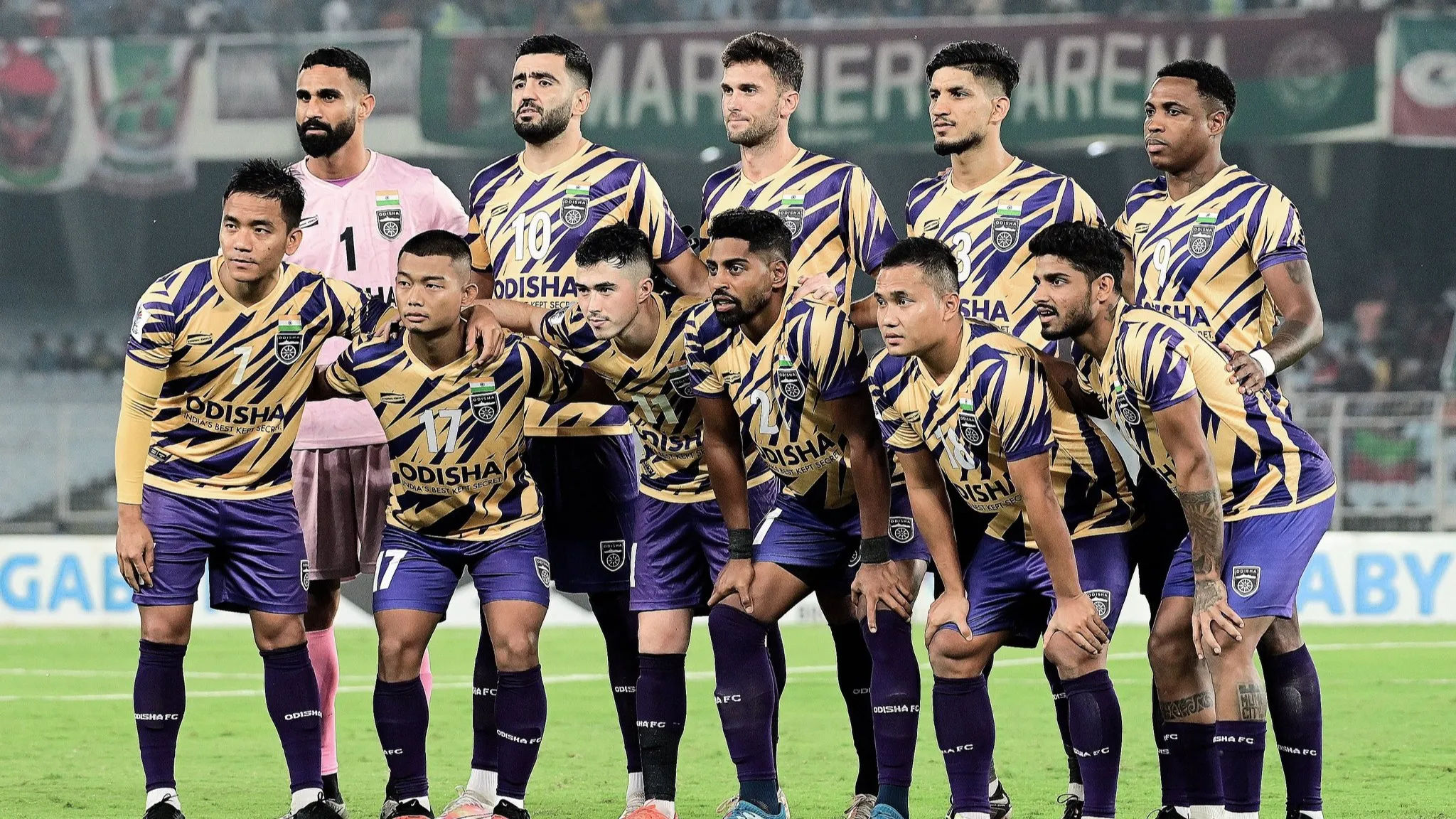
The Global Stage, Locally Broadcast: The Enduring Power of the AFC Cup Final Live Broadcast
Football, the world’s most popular sport, thrives on its ability to capt connect people across geographical and cultural divides. While the UEFA Champions League or the FIFA World Cup often grab global headlines, regional club competitions play an equally vital role in fostering local rivalries, showcasing emerging talent, and uniting communities. Among these, the AFC Cup stands as Asia’s second-tier club competition, offering a crucial platform for teams from developing football nations to vie for continental glory. At the heart of this spectacle, transforming a match into a shared experience, lies the live broadcast of the AFC Cup Final. This article delves into the multifaceted importance of this broadcast, exploring its evolution, technological advancements, commercial implications, and its profound impact on fan engagement across Asia and beyond.
The AFC Cup, inaugurated in 2004, was designed to provide a pathway for clubs that did not qualify for the more prestigious AFC Champions League to compete at a continental level. It serves as a vital proving ground, allowing clubs from West, Central, South, and Southeast Asia to test their mettle against diverse playing styles and strategic approaches. For many participating clubs, reaching the AFC Cup Final represents the pinnacle of their achievements, a chance to etch their name in history and bring immense pride to their cities and nations. The live broadcast, therefore, is not merely a transmission of a game; it is the conduit through which these dreams and aspirations are shared with millions.
The Evolution of Sports Broadcasting: From Niche to Necessity
The journey of sports broadcasting has been one of relentless innovation. What began as rudimentary radio commentary in the early 20th century, painting pictures with words, evolved into the advent of television, bringing moving images directly into homes. For decades, traditional terrestrial and cable television networks were the sole gatekeepers of live sports content. However, the turn of the millennium witnessed a paradigm shift with the rapid proliferation of the internet and digital technologies.
Today, the live broadcast of the AFC Cup Final encompasses a complex ecosystem of traditional TV channels, dedicated sports streaming platforms, official club websites, and even social media channels. This multi-platform approach is crucial for reaching Asia’s incredibly diverse and vast population, where internet penetration, mobile usage, and viewing habits vary significantly from country to country. The transition from a singular broadcast channel to a multi-channel, multi-device experience has democratized access, allowing fans to watch the final from virtually anywhere, whether on a large screen in a communal viewing area or on a smartphone during their commute.
The Anatomy of a World-Class Live Broadcast
Producing a live broadcast of a major football final is an intricate ballet of technology, expertise, and storytelling. For the AFC Cup Final, the goal is to deliver an experience that rivals the world’s top-tier competitions, captivating audiences and showcasing the best of Asian football.
1. Production Quality and Immersive Visuals: High-definition (HD) and increasingly 4K Ultra HD (UHD) cameras are standard, capturing every angle, every sprint, every tackle, and every goal with breathtaking clarity. Slow-motion replays from multiple angles, including "spider cam" views from above the pitch, provide unparalleled insights into key moments. Sophisticated graphics packages overlay real-time statistics, player information, and tactical analyses, enriching the viewer’s understanding. The integration of VAR (Video Assistant Referee) decisions into the broadcast, complete with explanations, has also become a critical component, ensuring transparency and engaging viewers in the decision-making process.
2. Expert Commentary and Analysis: Beyond the visuals, the spoken word transforms a silent spectacle into a compelling narrative. Experienced commentators, often former players or coaches, provide real-time play-by-play descriptions, strategic insights, and emotional context. Many broadcasts offer multi-language commentary options, catering to the diverse linguistic landscape of Asia, ensuring that fans can follow the action in their native tongue, whether it be Arabic, Persian, Malay, Thai, or Mandarin. Pre-match build-up shows, half-time analysis, and post-match debriefs, featuring expert pundits, further deepen engagement, offering predictions, dissecting performances, and celebrating victories.
3. Accessibility and Reach: The AFC and its commercial partners meticulously negotiate broadcast rights with a network of local and regional television stations and streaming services. This ensures maximum reach across key markets. For instance, in West Asia, major sports networks would secure rights, while in Southeast Asia, national broadcasters or dedicated sports channels might carry the game. The rise of Over-The-Top (OTT) streaming services has also allowed for direct-to-consumer access, often requiring subscriptions but offering convenience and enhanced features like on-demand replays.
4. Digital Engagement and Interactivity: Modern broadcasts extend beyond passive viewing. Social media integration allows fans to share their reactions, opinions, and celebrate goals in real-time, often with official hashtags promoting the event. Some broadcasts incorporate fan polls, interactive graphics, and even live Q&A sessions with pundits, creating a sense of community and shared experience. This digital layer transforms the broadcast from a one-way transmission into a dynamic, interactive event.
Reaching Diverse Audiences Across Asia
Asia’s immense geographical spread and time zone differences pose unique challenges for live broadcasting. A match played in Doha, Qatar, might kick off at a vastly different local time for viewers in Tokyo, Japan, or Sydney, Australia. Broadcasters often schedule multiple repeat showings or make the full match available on-demand to accommodate these variations, ensuring no fan misses out.
Furthermore, the continent’s linguistic and cultural tapestry necessitates a localized approach. A generic English commentary might suffice for some, but truly connecting with local fan bases requires tailored content. This often means investing in local production teams, hiring commentators familiar with regional football nuances, and incorporating cultural elements into the broadcast, making it resonate more deeply with specific audiences.
The Commercial Imperative: Rights, Sponsorships, and Anti-Piracy Measures
The live broadcast of the AFC Cup Final is not just about sport; it’s a significant commercial asset. Broadcast rights are a major source of revenue for the Asian Football Confederation (AFC) and participating clubs. These revenues are reinvested into football development, infrastructure improvements, and prize money, fueling the growth of the sport across the continent.
Sponsorships also play a crucial role, with global and regional brands vying for visibility during the high-stakes final. Their logos appear on pitch-side advertising boards, broadcast graphics, and often integrated into pre- and post-match segments. The commercial value of the broadcast underlines the importance of robust anti-piracy measures. Illegal streaming and unauthorized re-broadcasting not only deprive the sport of vital revenue but also dilute the value of legitimate broadcast partnerships. The AFC, in collaboration with its rights holders, employs sophisticated digital rights management technologies and legal actions to combat piracy, safeguarding the integrity and commercial viability of its premier club competition.
Technological Innovations Shaping the Future
The future of live sports broadcasting promises even greater immersion and personalization.
- Augmented Reality (AR) and Virtual Reality (VR): Imagine watching the final from a virtual seat in the stadium, with AR overlays providing real-time stats, player tracking, and tactical formations. VR experiences could transport viewers directly onto the pitch or into the dugout, offering unprecedented perspectives.
- Artificial Intelligence (AI): AI can revolutionize production by automating camera angles, generating highlight reels instantly, and providing deeper analytical insights that go beyond human capacity. Personalized commentary tracks, tailored to a fan’s preferred language or even their favorite player, could also become a reality.
- Interactive Overlays and Personalized Feeds: Viewers might soon be able to customize their viewing experience, choosing specific camera angles, accessing player-specific statistics on demand, or even toggling between different commentary teams.
- 5G Connectivity: The rollout of 5G networks promises ultra-low latency and higher bandwidth, enabling seamless streaming of high-quality video, even in crowded environments, and unlocking new possibilities for mobile-first interactive experiences.
The Enduring Impact on Fan Culture and the Sport
Ultimately, the live broadcast of the AFC Cup Final is more than a technical feat; it is a cultural phenomenon. It unites millions of fans, transcending national borders and fostering a shared passion for the beautiful game. For aspiring young footballers across Asia, watching their heroes compete on the continental stage provides inspiration, demonstrating what can be achieved through dedication and talent.
The broadcast elevates the profile of the AFC Cup, attracting new fans, investors, and media attention. It showcases the growing quality of Asian football, challenging preconceived notions and highlighting the vibrant footballing cultures that exist beyond the traditional European strongholds. It fosters a sense of regional identity and pride, as fans rally behind their local champions.
In conclusion, the live broadcast of the AFC Cup Final is an indispensable cornerstone of the competition’s success and growing stature. It is a testament to the continuous evolution of sports broadcasting, leveraging cutting-edge technology to deliver an immersive, accessible, and engaging experience. As Asian football continues its upward trajectory, the power of its live broadcast will only intensify, solidifying the AFC Cup Final’s place as a truly global spectacle, celebrated and shared by millions, one live stream, one television screen, and one passionate cheer at a time.



